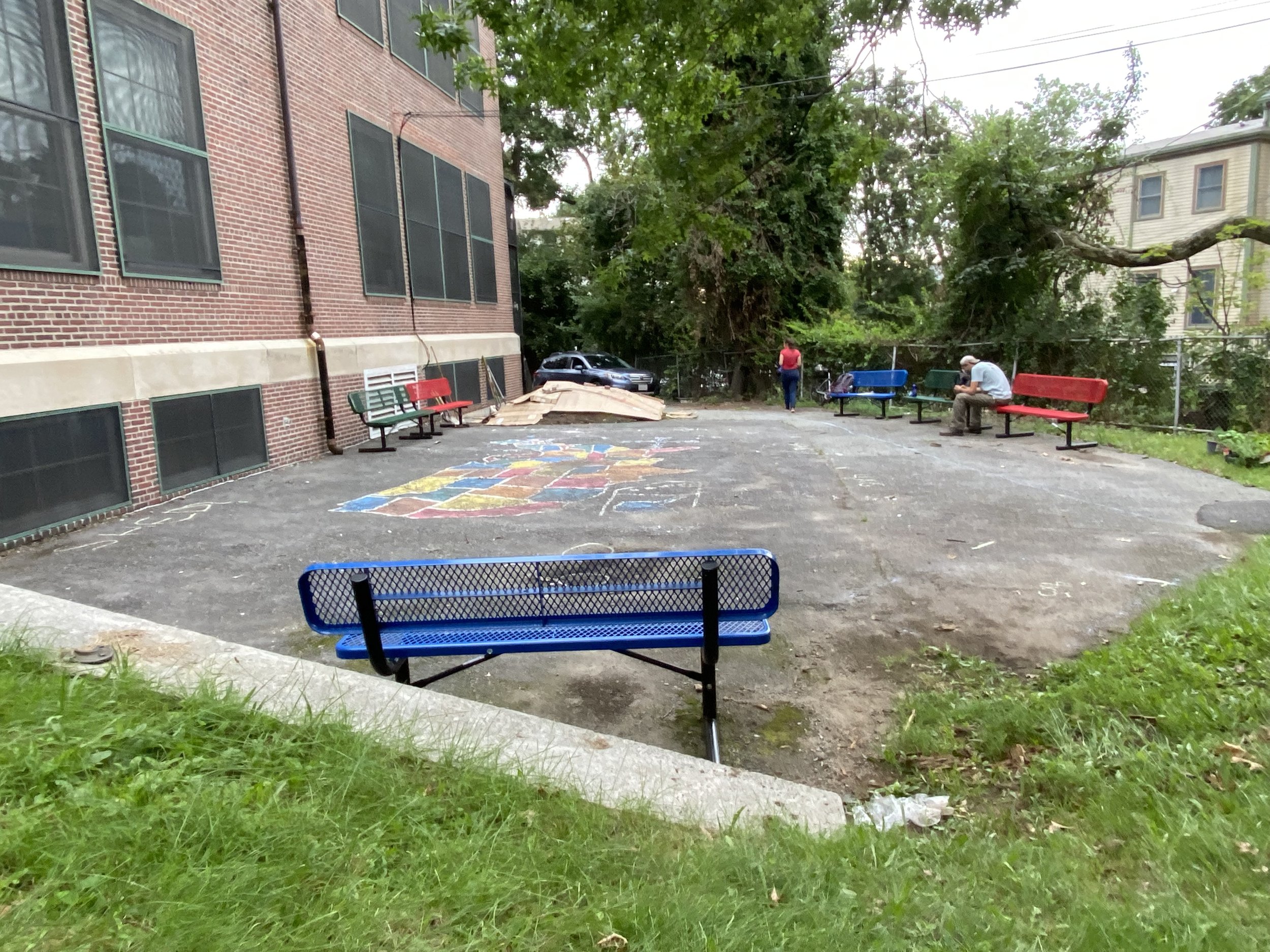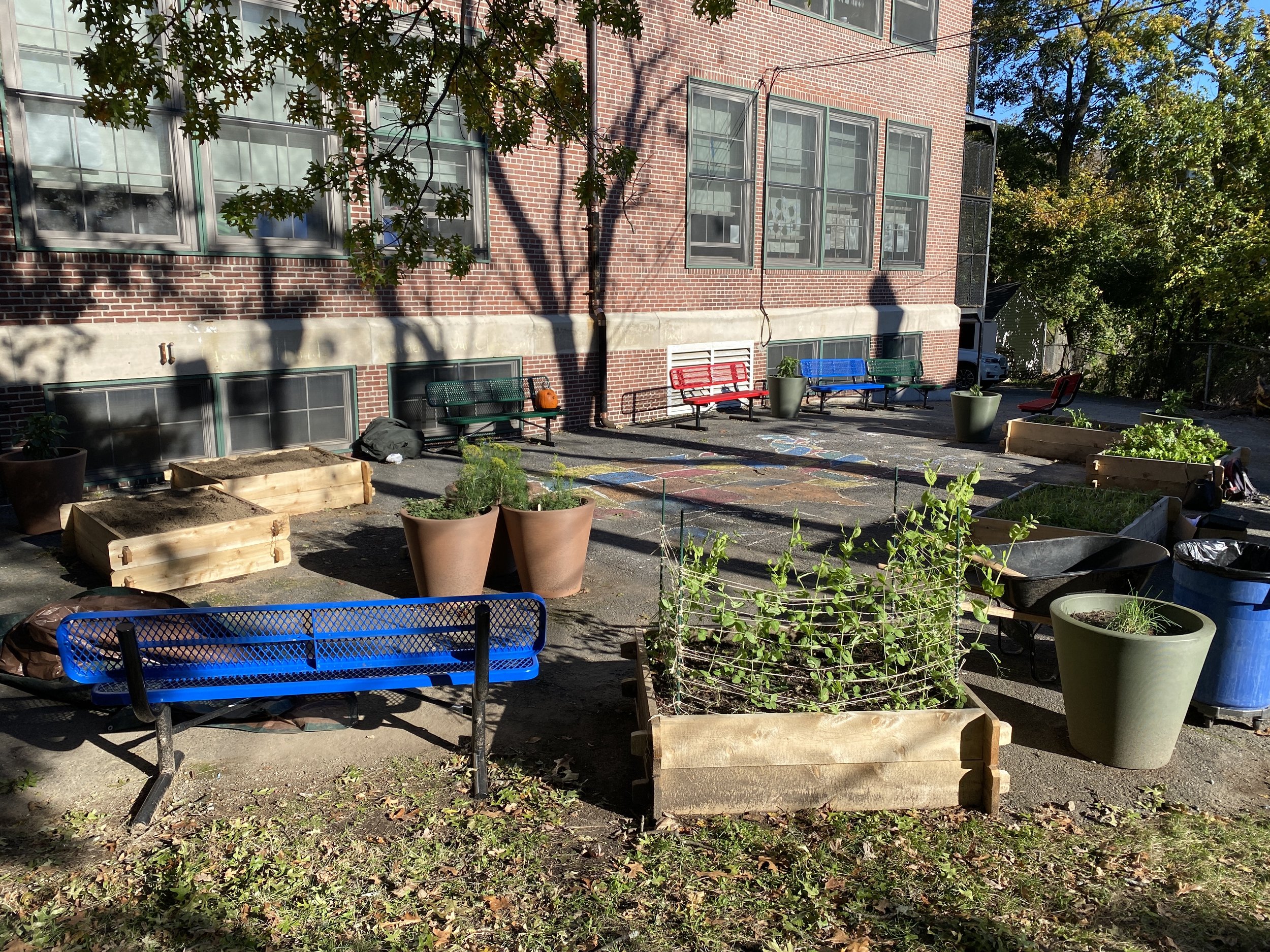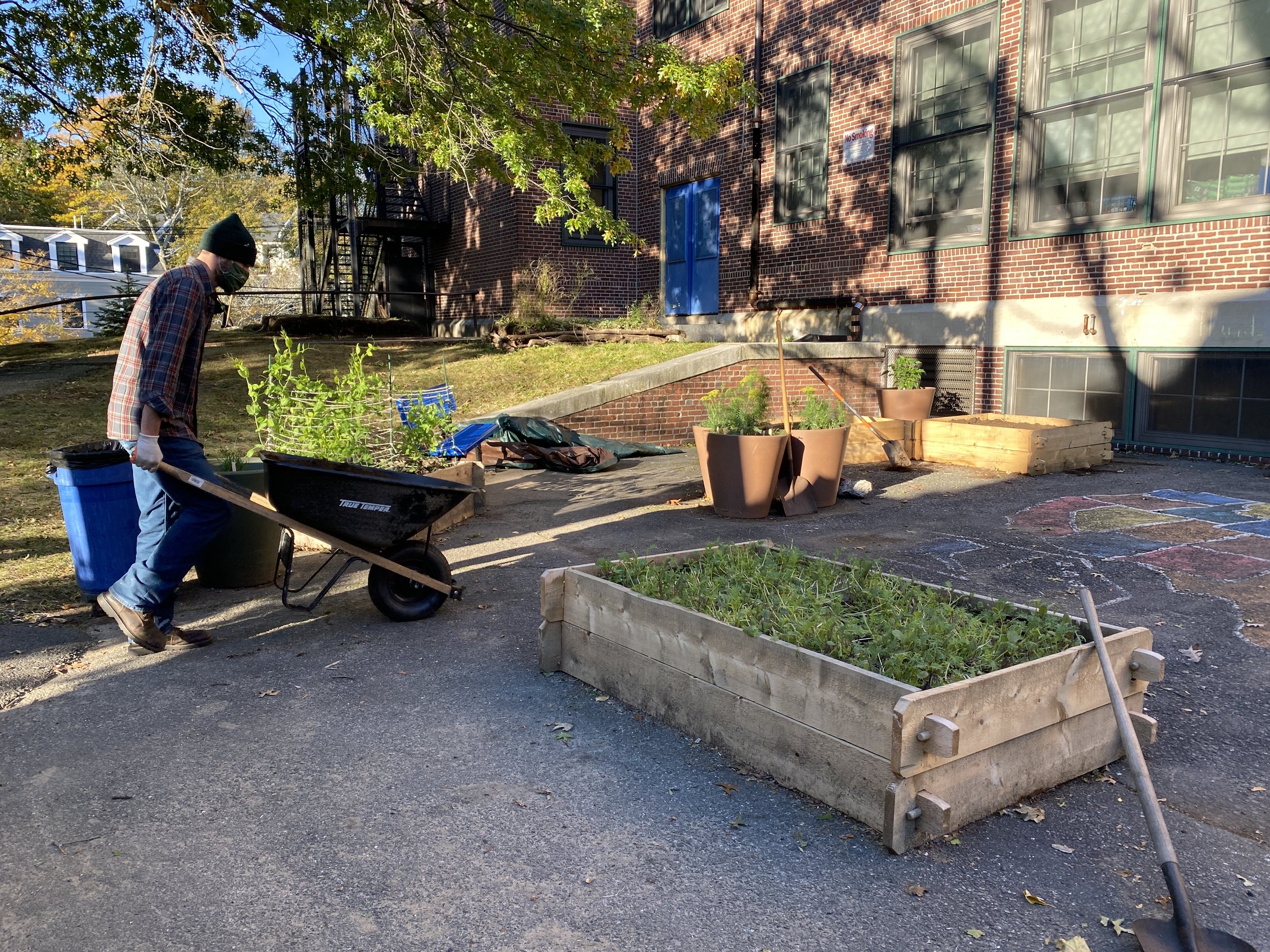Growing a New Garden Community: Spotlight on the Nathan Hale School
Erica Altman, Communications and Development Associate
Nestled in the Fort Hill neighborhood within the heart of Roxbury lies the quaint Nathan Hale Elementary School. With a student body of less than 200 across its 7 grade levels, the Nathan Hale School is unique for its multicultural and tight-knit community. If you make your way past the vibrant gates and grand wall mural to wind around the back of the historic school building, you will discover something new this year—their own school garden.


Following our extensive partnership process in the spring of this year, we were ready to build a garden at the Nathan Hale School! Shortly before students returned to school in September, CitySprouts staff members, joined by wonderful volunteers from Surface Oncology, got to work assembling garden beds, transferring fresh soil, and planting herbs in brand new garden pots. With an outdoor classroom built, the Hale School’s new Garden Educator, Karl Koch, was ready to grow a garden and begin teaching hands-on lessons by the first day of school.
Integral to initiating the process of building a garden is a desire for one from the school community. Insert Luis Arroyo, the long-time science specialist at the Nathan Hale school, who has been seeking ways to further engage his students with hands-on learning. In order to connect youth with their local community, Mr. Arroyo had been taking his students to Haley House—a local nonprofit bakery and cafe that supports reintegrating previously incarcerated individuals—for years in order to engage the students with hands-on science learning on their urban farm. Although the students excitedly asked to return to their de facto outdoor classroom at Haley House throughout the school years, it was an outdoor learning experience that was previously only reserved for special occasions. However, CitySprouts provided the perfect opportunity for the school to bring this garden-learning experience home in order to be used on a consistent basis.
The excitement of returning to the garden classroom is for a multitude of reasons: it gives children a new learning environment to engage with, fresh air and ample space to express themselves, and there is always something new to look forward to. In just one class period, first graders were given the opportunity to sort organic matter and learn about the components and importance of compost, plant perennials for their insulated hoop house garden bed, and explore the garden beds Karl had covered with dead leaves to protect the budding pea plants underneath. These kids are having fun and, simultaneously, learning science - and they’re learning fast. Watching seven year olds make astute observations that the dead leaves piled on the pea plant beds acted as a layer of “insulation” for the plants before Karl could tell them himself reflects the extraordinary value of hands-on education. Their consistent visits to the garden are already teaching the students pattern recognition skills as well as the ability to compare and contrast the properties of varying plants in the garden.
“Students are constantly coming up to me during the week to show me plants they have found at home… or plants they want to add to the garden.”
Through this partnership, Mr. Arroyo and Garden Educator Karl hope to organically integrate the garden with science learning. Since introducing students to the garden, both have expressed excitement about how engaged with the gardens students have been. “I know the garden is adding lots of value,” Mr. Arroyo told me. “Students are constantly coming up to me during the week to show me plants they have found at home… or plants they want to add to the garden.” Sure enough, the classes I visited at the school assembled themselves quickly and quietly in anticipation of visiting their outdoor classroom. It was clear that the routine set by Karl’s arrival to the Nathan Hale school was an event to look forward to across all grade levels.
While most may assume garden learning can often only connect with life science curriculum, Garden Educator Karl argues otherwise. “Fourth graders’ first unit was ‘soil, rocks, and landforms.’ We started the school year off by filling test tubes with water and then adding either soil from the garden beds or just from the school’s surroundings.” Students were able to contrast the imported, nutrient-dense soil used to grow vegetables in the garden with the soil lining their school grounds, which was much harder due to its composition of humus and clay. “People assume our garden program is life science, but we can integrate pretty much anything, like earth science,” says Karl.
“How unique is it for a child to have the opportunity to come home and tell their parents that they used a power drill at school today?”
Of course, planting is not an activity that gets less exciting with age; the fifth graders were ecstatic to plant tulip, daffodil, and krakus bulbs after they removed weeds from one of the school’s previously abandoned garden beds. In addition, older kids are able to engage with gardens in alternative ways - some of which involve power tools! Assembling hoop houses, which act as makeshift mini greenhouses to insulate plants during the winter season, is something students can directly take part in as a component of their experience with the school garden.
“I find it exciting to make the garden a place for learning general life skills,” Karl explained to me. Working as a team to align the wrap over the bed and then to power drill in the boards that held the tent together is a departure from traditional science learning, but provides a one-of-a-kind developmental experience for students to build teamwork and practical skills. “How unique is it for a child to have the opportunity to come home and tell their parents that they used a power drill at school today?” Karl smiled.
Cultivating a garden at the end of the summer is not exactly traditional, so Mr. Arroyo, Karl, and the students are eager with anticipation to see what they will all grow together come the spring season. “The whole school is waiting for the spring to see the garden in full action,” Mr. Arroyo exclaimed. Luckily, Karl has big plans for the Nathan Hale garden beyond the perennials that are currently in the garden. Partially based on student feedback, Karl plans to cultivate all kinds of vegetables, ranging from rainbow corn to heirloom tomatoes. Given how committed the entire school community is to the garden, it is sure to bloom beautifully later this year and for many years to come.
During this time of uncertainty and instability in these students' lives, it now feels more important than ever that they have a source of familiarity and free space to explore and wonder without limits. A school garden, for many, is that familiar space for children, their families and the school community to return to every year.
Growing into new communities means giving children access to new learning experiences with nature that may have never been accessible to them before, a central tenet to CitySprouts’ mission. Expanding into schools across Roxbury has been a gradual yet rewarding process in CitySprouts’ goal to reach more youth in Boston. Branching out into our fifth school in Roxbury would have not been possible if not for the generosity of our partners on this project (Siena Construction, Foresters Financial, the Whole Kids Foundation, Life Science Cares, and Surface Oncology), supporters like you, and CitySprouts advocates within communities in Roxbury.




